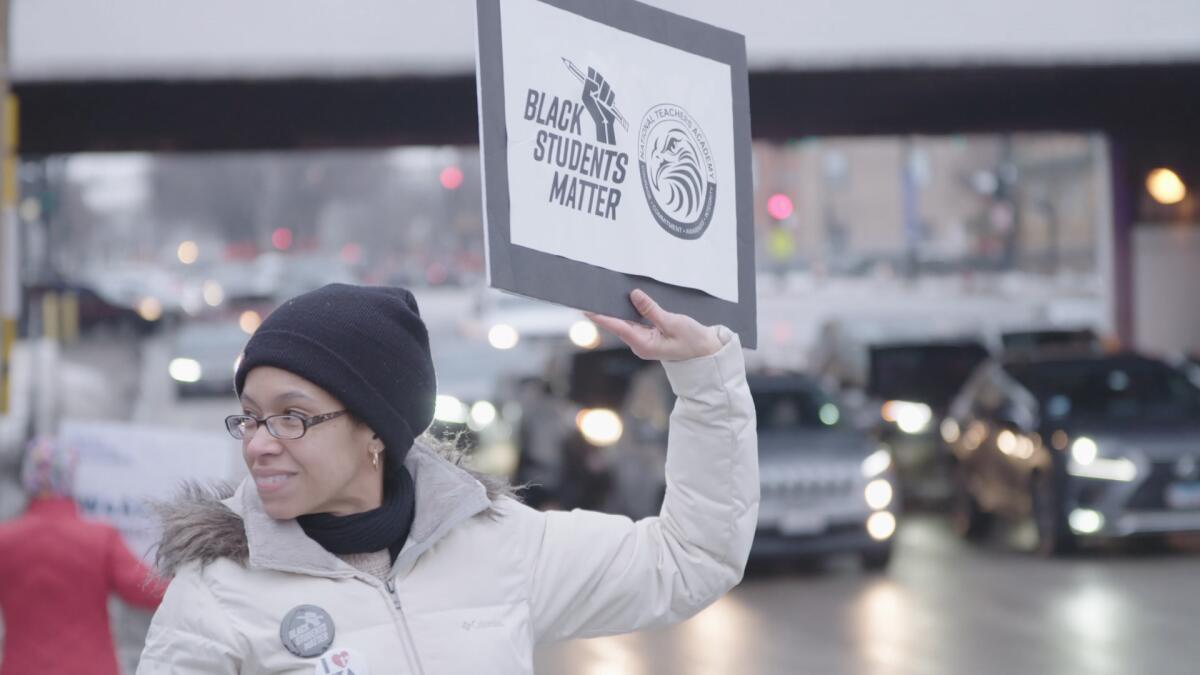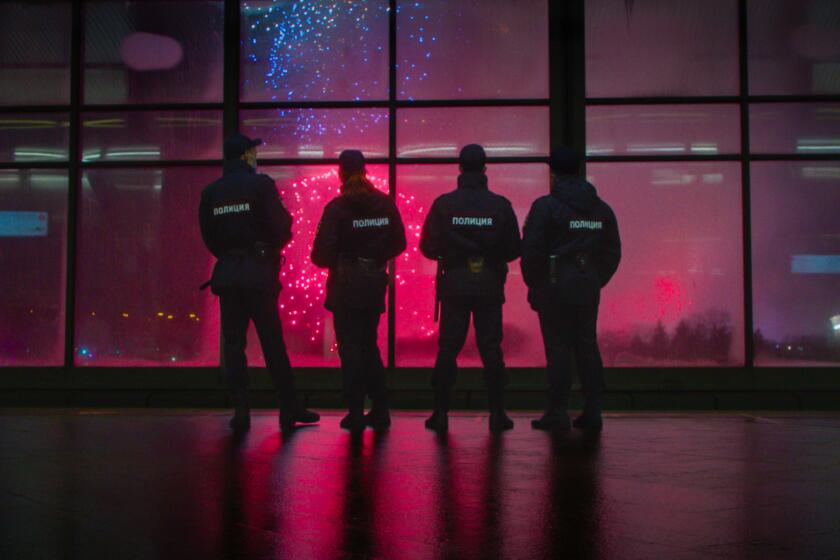‘Let the Little Light Shine’ takes on gentrification through one special public school

- Share via
Documentaries being what they are, one doesn’t normally worry about spoilers when writing about them. But Kevin Shaw’s “Let the Little Light Shine” ends with such a “power of filmmaking” bang that it’s a struggle not to lead with it.
With great reluctance, I will not. “Let the Little Light Shine,” which had its world premiere at the True/False Film Fest and will be available on PBS’ “POV” series in December, is the story of the battle to save the National Teachers Academy, a South Chicago K-8 school serving mostly Black families. Shaw’s ability to maintain a propulsive beat while making a movie that involves a fair number of school board meetings borders on the miraculous.
Documenting an evolving story forces a filmmaker to give up all control of the two things he or she feels most strongly about — the picture’s ending and its message. As the fate of the school hung in the balance, Shaw was prepared to make what would be, essentially, two movies.
One would be a story of struggle and mourning; school closures, he says, put people through stages of grief similar to those surrounding death.
The other would be a real-life example of a favored Hollywood narrative — struggle and triumph.
During its premiere at True/False, where it was chosen as the Show Me True/False honoree, “Little Light” regularly moved members of the audience to groans, gasps, cheers, tears and, finally, a standing ovation.
You can read that as a spoiler, but in any case, such audible emotional engagement is not something one typically encounters while watching a documentary, even at a film festival, and certainly not one about a public school.
At the first big film festival since the Ukraine invasion, Russian filmmakers grappled with their responsibilities, but for audiences, art transcended politics.
But then, NTA is not a typical public school. Built in 2006 near the now defunct Harold Ickes public housing project, the academy was, when Shaw began filming in 2017, top ranked, with a beloved and devoted staff, dedicated parents and highly motivated students. (If you love “Abbott Elementary,” you will love this film.)
Then, it became the fulcrum of tensions surrounding the ongoing gentrification of the South Loop. For years, white families had been moving into the neighborhood in growing numbers, but many refused to send their children to NTA. As a result, the film argues, other local schools, including South Loop Elementary, became overcrowded. When members of the Prairie District Neighborhood Alliance asked Chicago Public Schools to build a new high school, their request was denied. So the group proposed that the city combine the two elementary schools and turn NTA into a high school.
The students, staff and parents of the academy were outraged, alarmed and resolute. They said “no.” In many different ways, including — in the scene that opens the film — protesting outside then-Chicago Mayor Rahm Emanuel’s house.
Shaw, who made “The Street Stops Here” and was a director and cinematographer for the acclaimed series “America to Me,” grew up in Chicago. Fittingly, he became aware of NTA’s situation when he saw an elementary school friend, Elisabeth Greer, post about it on social media. Greer took him to a meeting and introduced him to then-Principal Isaac Castelaz.
“I knew it was a good story,” Shaw said. “But I wouldn’t be able to tell it without getting access. Isaac is a historian, and he wanted it documented, if only to help other schools in similar situations, so he let me film.”
For two years, the filmmaker had unlimited access as the academy fought to avoid becoming one of the hundreds of Chicago public schools shuttered in the last 10 years. Castelaz, along with parents Greer and Audrey Johnson, became three of the film’s main characters. But interviews with students and scenes from the school and the many protests make the tightness of NTA’s community and its larger significance very clear.
The creator and star of ‘Abbott Elementary’ explains the inspiration for her ABC comedy — and why her goals for it go beyond just making people laugh.
Gentrification, and the racism that almost inevitably accompanies it, has become a hot topic in television and film, but no other story has made that troubling relationship so clear. NTA, a top performing school with an overwhelmingly Black student body, faces closure because an increasingly white population has created school overcrowding in part by refusing to send their children to a top-performing school with an overwhelmingly Black student body.
The need for a new high school is no doubt sincere, but the proposed solution reeks of racism. Classism too, but mostly racism.
Shaw had a hard time finding anyone who would speak to him in favor of turning NTA into a high school. The two who did talked about improving the neighborhood and ensuring that those who had more recently moved in — young families with children in particular — did not move out.
“I don’t think they understood what NTA was, and what it meant to the community,” Shaw says, “because it had been misrepresented for so long, and they had never visited the school. NTA should be a model school, and instead, they were willing to close it down.”
Watching this David and Goliath tale unfold is not always easy — “I feel like we keep losing,” Greer tearfully tells the camera at one point — but if there ever were a school worth fighting for, it was this one.
Greer and Castelaz joined Shaw at the premiere; they seemed shocked and overwhelmed by the applause and the number of people who approached them with praise and gratitude after the screening.
A five-part look at the city of Chicago through the lens of its last mayoral election.
“I have been to festivals before,” said Shaw, “but I wasn’t prepared for this. I’m just happy to see how the wave of emotion has affected the participants. They worked so hard, were so brave, and now they get to feel the love.”
As for the ending, well, as Shaw said: “Thank God I was filming when it happened.”
More to Read
Only good movies
Get the Indie Focus newsletter, Mark Olsen's weekly guide to the world of cinema.
You may occasionally receive promotional content from the Los Angeles Times.













